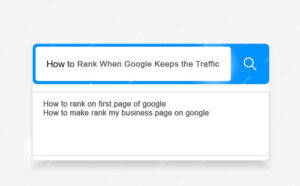KPIs, short for Key Performance Indicators, are metrics used to measure and track the performance of a business model, including its marketing efforts. The consistent growth of Digital Marketing sees an emergence of new tools quite frequently. These tools help improve
and optimize your digital marketing campaign, generating improved results. New tools introduce new KPIs to the mix, KPIs that help measures the effectiveness of a digital marketing campaign.
We are going to focus on the 8 important KPIs that remain the same across the well-known digital marketing tools.
1. Cost per lead
One of the most important KPIs for Digital Marketing lead generation, cost per lead, is the measure of how much it will cost you to generate a single lead through your digital marketing campaign.
Cost Per Lead = Cost of Digital Marketing Campaign/ Number of Total Generated leads
2. Cost per action or Cost Per Acquisition
Where Cost per lead focuses on leads, Cost Per Action or Cost Per Acquisition (CPA) is more focused on converting the customer. It means the total cost of getting a new paying customer or closing a deal.
Cost per action is a measure that helps determine the effectiveness of a digital marketing campaign, helping you track the results.
CPA= Total cost of acquiring new customers/ Total number of new customers acquired
3. Website traffic
In layman’s terms, Website traffic is the number of people visiting your website through either one or both organic and paid medium.
It is an essential metric that helps quantify the website’s effectiveness, in particular, how it has impacted the visitors. Higher website traffic has tremendous benefits, including a boost in search engine ranking, increased exposure, higher conversions, and better ROIs.
A well-planned SEO Campaign can help you improve your website traffic. You can use tools such as Google Search Console, SEMRush, UberSuggest, and SimilarWeb to check your website’s current traffic. You can also reach out to us for a free website report.
4. Pageviews
Another important Digital Marketing KPI, Pageviews are also known as views per page. It measures how many times a particular page on your website is viewed. Higher the pageviews, the more popular the webpage and website.
How to increase page views?
Design a user-friendly website filled with a variety of authoritative and useful content that’s promoted regularly on social media platforms.
5. Click-through rate
Click-Through Rate, often known as CTR, is a digital marketing metric that gives us the percentage of people who click on an advertisement or a link to reach the target, be it a landing page or social media profile.
More people clicking on your adverts means they are interested in your brand’s or business’s offerings. An optimized Pay per click marketing campaign usually generates higher CTR. When your website has a low CTR, it could be that you aren’t targeting the right audience.
How to find Click-through Rate:
You’ll need access to a digital marketing tool to get insights into such KPIs. You can calculate CTR as follows:
CTR= Number of clicks received by your ad/ Number of times people saw your ad
6. Conversion rate
When business or brand owners create a website, it is done so with a specific set of goals, prime amongst them is to convert the website visitors into leads and ultimately customers.
What’s the ideal conversion rate?
Several sources claim that a good conversion rate for websites lies somewhere between 2 to 5%. But if your website already has achieved that rate, it doesn’t hurt to aim higher.
Conversion Rate= (Total number of Conversions/ Total number of visitors)*100
7. Bounce rate
Bounce rate is the number of website visitors that leave your website after visiting a single page. A high bounce rate means more visitors are leaving your websites, unable to find what they came for.
How to reduce your website’s bounce rate?
In order to reduce your website’s bounce rate, you have to optimize your website, make it more user-friendly, compatible across all devices, and enrich it with top-notch content. All these steps can also significantly improve your website’s conversion rate.
8. Customer lifetime value
CLV, short for Customer Lifetime Value, is a Digital marketing KPI that helps determine the total money a customer is likely to spend for the duration of their relationship with your business or brand.
How does Customer Lifetime Value factor into your digital marketing campaign?
A key conversion metric, CLV considers not only new purchases but also consecutive purchases made by the customer. This number can help you determine the scope of customer retention strategies, such as loyalty programs and tailored services.
CLV= (Average customer purchase value* Average number of purchases) * Average Customer lifespan
Takeaway:
As we have mentioned before, there are several other digital marketing KPIs that can help you measure and track your business online. Here’s a quick list of a few others that you should look over: Average time on page, Conversion rate per keyword, Page Authority, Domain
authority, and Social Media Engagement rate.
If you need any help regarding Content Marketing or any other digital marketing service, feel free to reach out to us!










